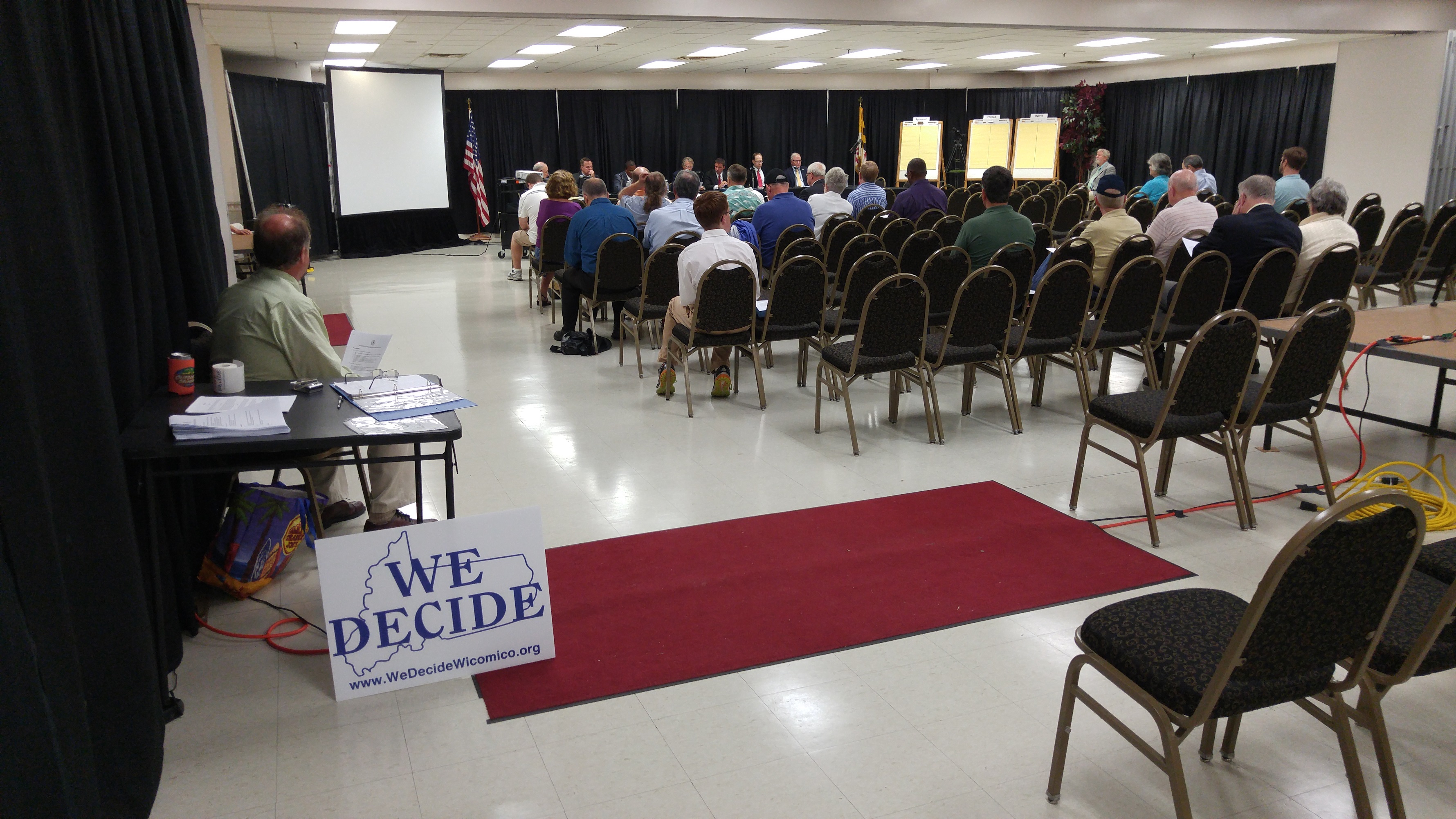After six straight seasons of losing and the perception that most of the Orioles’ prospects were going to be playing at higher levels in the system, surely the experts had Delmarva penciled in for a regression from last year’s 66-73 record. And if the crystal ball had foretold that over a dozen players would be parked on the team’s disabled list for the latter half of the season one might expect a dreadful record such as those we had earlier this decade.
You may have never heard of most of this year’s Shorebirds before and in a couple years they may return to obscurity. But in the season’s second half they were the little team that could, turning around a 33-35 first half to go 38-32. Too bad this was the year West Virginia had the team to win 50 games of 70; still, by finishing 71-67 overall Delmarva snapped its six-year slide and perhaps made a few prospects out of guys thought to be suspects when 2015 began.
By the way, if you liked last year’s format you’re in luck because I’m recycling it.
With a batting champion and barrage of .300 hitters pacing last year’s lineup, a repeat of their franchise-best batting wasn’t in the cards. This year the team was around league average in a number of categories, finishing close to the middle of the 14-team SAL.
- A .249 team batting average was only 11th in the league.
- Yet they outscored last year’s squad, as 621 runs was enough for 7th in the league. That was actually fairly efficient since they ranked 12th in hits with 1,122.
- The 257 doubles tied for fourth, which was also their rank with 44 triples.
- 67 home runs was good for ninth position.
- We finished fifth with 571 runs batted in.
- We finished ninth in total bases with 1,668.
- We drew 458 walks, which ranked 3rd in the SAL. (We were leading the league for a good part of the season, too.) On the other hand, 1,084 strikeouts was third-most.
- Team speed was not an asset. We were dead last with just 69 stolen bases in 100 attempts. By comparison, Hickory was next-to-last with 95 steals.
- Our .325 on-base percentage was seventh in the league, with a slugging percentage of .370 ranking eighth. This meant our OPS of .695 was 8th of 14.
The average numbers continued with the pitching staff. We ended up eighth in the league for ERA with a 3.75 mark.
Some other pitching numbers:
- Our 12 shutouts tied for third in the loop.
- We had the fifth-highest number of saves with 41.
- It seemed like we had a lot of doubleheaders and not many extra-inning games. Combine that with being two games short of a full schedule and you figure out why we threw the fewest innings (1,177 2/3.)
- 1,175 hits allowed was ninth. Yet the 608 runs and 491 earned runs we gave up were good for seventh.
- Maybe it’s because Perdue Stadium is a tough home run park, but we gave up the fourth fewest with 61.
- Control was good: we were one off the league lead with just 56 hit batters and the 364 walks we allowed were fourth-lowest.
- Only Rome held us off the bottom in strikeouts as we collectively fanned 891 – a far cry from last season’s 1,105.
- Finally, our WHIP (walks+hits/innings pitched) was sixth in the league at 1.31.
Our fielding was somewhat subpar, as we finished in a tie for 10th with a .968 aggregate fielding percentage.
Around the organization, only Frederick and one of the two Oriole Dominican Summer League teams finished below the .500 mark. Bowie and Norfolk made their respective league playoffs; more importantly Aberdeen was in their league race until the final day of the season and finished 40-36. Here’s hoping their winning ways continue here next season.
The question before us now is how this year’s crop of Shorebirds of the Week fared, so let’s review.
April 9 – Nik Nowottnick
I picked Nik only to see him promptly elevated to Frederick. And while he made two April appearances with the Shorebirds, being unscored upon in 2 1/3 innings, he spent most of the year with Frederick where he went 4-2 with a 4.91 ERA in 37 appearances. One concern is a 1.67 WHIP as he walked 35 and allowed 69 hits in 62 1/3 innings. It wouldn’t surprise me to see him repeat Frederick.
April 16 – Alex Murphy
For the first month or so Alex tore up the league, collecting 28 RBI in 32 games. But an injury cost Murphy three months of the season, so his pre-injury slash of .258/2/28/.737 OPS held up. After a brief GCL rehab stint where he went 0-for-8 in two games, Alex finished the year in Aberdeen where he hit .291/2/8/898 OPS in 15 games. He’ll be 21 next season so don’t be surprised if we see him again in the hopes of an injury-free season.
April 23 – Zeke McGranahan
Zekey had a good start to the campaign, but ended up on the disabled list by Memorial Day and lost the rest of the year. He finished 0-3 but with a 2.53 ERA. The 1.59 WHIP raised some eyebrows, though, as he walked 20 in 21 1/3 innings. The injury also came at a bad time because Zeke was on the older side of league average and turns 25 in January. If he’s back in time next season he may be pressed to succeed quickly.
April 30 – Jomar Reyes
One of the youngest players in the South Atlantic League this year will likely be one of the youngest in the Carolina League next season, if he can stay on the field. Various injuries limited Jomar to 84 games with the Shorebirds and forced him out of the SAL All-Star Game, but he hit .278/5/44/.774 OPS here. Add in the 5 rehab games he played in a brief return to the Gulf Coast League (4-for-16 there) and it was a great season for an 18-year-old. Reyes is my Prospect of the Year.
May 7 – Jared Breen
In his second tour of duty with the Shorebirds, Breen was showing improvement at the plate until a serious collision with the stadium wall ended his season after just 62 games. He had a .242/1/22/.677 OPS slash line at the time, which put him on pace for his best offensive season thus far. He may be on the cusp of a promotion to Frederick, although in his case he may need extended spring to recover from his collision.
May 14 – Bennett Parry
Parry was an effective starter until his season came to a premature end in May. In 9 starts, Parry was 3-3 with a 2.82 ERA and a 1.08 WHIP. His strikeout/walk ratio was 35 to 11, which is also good. Assuming he can recover in time, there’s no reason he shouldn’t move up.
May 21 – Conor Bierfeldt
In his second season with Delmarva, Conor did well enough (.247/7/56/.780 OPS) to merit being both a league All-Star and second-half promotion to Frederick. With the Keys, though, Conor regressed to just a .202/5/29/.654 OPS. It fit with the pattern Bierfeldt established the year before where he hit only .196 with Delmarva, so the question is whether the Orioles will give him another shot with Frederick.
May 28 – Matthew Grimes
Grimes led the team in starts (24) and innings pitched (126) but also gave up 148 hits and 58 earned runs. A 10-7 record and 4.14 ERA went with a 1.45 WHIP. Matthew had a campaign which merits promotion to the next level and will probably get it.
June 4 – Jay Gonzalez
The one person who could bring speed to the Shorebird lineup, Jay amassed 24 stolen bases in 72 games with Delmarva before being promoted to Frederick where he added 10 more. Naturally he had a transition at the plate, where a .294/0/21/.792 OPS slash with Delmarva slipped to .234/0/21/.591 OPS with the Keys. More telling, a 72/61 strikeout/walk ratio with the Shorebirds fell to 61/26 there. It’s probable he gets another shot there, though.
June 11 – Steve Wilkerson
Due to injuries, Steve only played in 92 games with the Shorebirds. But the league All-Star put together a solid season, hitting .287/2/30/.747 OPS. When you consider that Wilkerson raised his average 97 points from 2014 to 2015, you have to think he may have placed himself on the prospect list.
June 18 – Stefan Crichton
Stefan pitched well enough (4-4, 3.27 ERA and 1.15 WHIP) to merit a late-season promotion to Frederick. With the Keys, Crichton pitched is 7 games to a 4.05 ERA and 1.13 WHIP. More impressive was the 50 to 12 strikeout to walk ratio he had with Delmarva that became 18 to 1 in Frederick, in 13 1/3 innings. That’s a good resume for Frederick in 2016.
June 25 – Garrett Cortright
It was a shutdown season here for the SAL All-Star, who pitched to an 0.96 ERA and WHIP with the Shorebirds. But he found a little more difficulty with Frederick, allowing eight earned runs in 14 2/3 innings with the Keys. His strikeout to walk ratio went from 34 to 7 to 8 to 4 with the promotion. Still, Cortright should be a part of the Keys pitching staff next year.
July 2 – Logan Uxa
When I picked Logan, he had just returned from Frederick where he hit .265 in 13 games. With a late-season slump, Uxa finished with a .243/7/37/.736 OPS slash for the Shorebirds. He’ll be 25 by next spring and came as a minor league free agent, so the chances are he either makes Frederick or gets released.
July 9 – Elier Leyva
Leyva made his American professional debut with Delmarva, hitting .238/3/43/.636 OPS at the age of 24. It was a lengthy trial run, as Leyva played 118 games to lead the team. Whether these numbers merit promotion will be up to the Orioles, who gave him a bonus equivalent to that of a 9th or 10th round pick. Likely he gets another season.
July 16 – TJ Olesczuk
Demoted from Frederick after just 7 games where he hit .158 (3-for-19), Oleschuk hit .251/4/46/.741 OPS with the Shorebirds in 73 games. It seemed appropriate that he played with Delmarva, considering Frederick was a large leap from the Gulf Coast League where he played in 2014.
July 23 – Yermin Mercedes
Coming up at the tail end of the first half, Mercedes developed a reputation as a hard swinger and ended up leading the team with 8 home runs in only 64 games. Add in 42 RBI and a .272 average, and there’s a good case for advancing him ahead of the two catching prospects originally assigned to Delmarva, Jonah Heim and Alex Murphy.
July 30 – Nick Cunningham
The 4-3, 3.23 ERA numbers Nick put up before being selected as Shorebird of the Week ended up being his final numbers as he was placed on the suspended list. After the disaster of his 2014 season, Nick redeemed himself with a good season where he controlled his walks and gave up fewer hits than innings pitched. But will his suspension damage his career? That’s the question as Nick won’t be eligible to start the 2016 season.
August 6 – Josh Walker
Making 16 starts for Delmarva, Josh went 8-4 with a 3.20 ERA and a 59/15 K/BB ratio for a 1.16 WHIP. Those stats allowed Walker a late-season promotion to Frederick, where he struggled in 14 innings with an 0-2 record and 7.07 ERA. He still had good control, but allowed 20 hits in those 3 appearances. He’s likely ticketed for a spot on Frederick’s staff, though.
August 13 – Cam Kneeland
With the players placed on the Shorebirds, who would have thought a refugee from independent baseball would lead the team in RBI? But Cam’s total of 63 topped the team, to go with 6 home runs and a .267 average for a guy who played 49 games at third, 27 at second, 25 at first, 12 at short, and a couple in left. Hopefully the Orioles will see what he can do at the next level.
August 20 – Max Schuh
Another mid-season addition to the staff, Schuh was outstanding in 24 relief appearances despite the fact his peripheral numbers (39 hits allowed and a 1.34 WHIP in 40 1/3 innings) weren’t spectacular. He lost his only decision but picked up 3 saves overall, finishing in 15 of 24 appearances with a paltry 1.79 ERA.
August 27 – Ademar Rifaela
Although he started the 2015 season with a brief 7-game stint at Aberdeen (where he went 6-for-30), Rifaela found a home in left field for Delmarva. With a slash of .262/5/20/.740 OPS in 59 games here, the question surrounding him is whether that was a long enough audition for the next level or if another half-season is required. My thinking leans toward the latter, which means we would see him again in April.
September 3 – Dariel Delgado
As the last pick, Delgado finished pretty much true to his stats when selected, going 8-3 with a 3.09 ERA and 1.31 WHIP over 93 1/3 innings. This was after a brutal nine-inning stretch in Frederick where he allowed 12 runs; however, the nine runs given up in one single-inning appearance skewed the numbers significantly. Since this was his second round with Delmarva, I would think Dariel moves up next season.
*********
Here is a list of my Shorebirds of the Year, going back to the award’s inception in 2006:
- 2006 – Ryan Finan
- 2007 – Danny Figueroa
- 2008 – Sean Gleason
- 2009 – Ron Welty
- 2010 – Brian Conley
- 2011 – David Walters
- 2012 – Brenden Webb
- 2013 – Lucas Herbst
- 2014 – Chance Sisco
One thing they all have in common is that they were selected as a Shorebird of the Week.
But in compiling this list, I realized to my horror that my memory failed me. There is a significant omission of a deserving player who played here all season and put up good numbers on a team which frankly didn’t have any outstanding talents that had enough time here to qualify. Perhaps the closest were Jomar Reyes and Steve Wilkerson, but neither made it into 100 games.
So I looked at the mound and realized that some of those players had good but not great seasons. You’ll notice that just two pitchers have been Shorebird of the Year, and they had to either be flat-out dominant for a whole season (Sean Gleason) or lead the league in saves (David Walters.)

It would not be such a big deal to skip this player, except John Means did something unique: the first Shorebird no-hitter in 17 years. So I’m going to be unique and for the first time name a non-Shorebird of the Week, John Means, as my Shorebird of the Year. Just because I thought in August that I already picked him shouldn’t keep John from his due.
So that’s a wrap on the player side for 2015. Next week will be my picks and pans feature speaking as a fan, and then in December I will certainly update my Shorebird of the Week Hall of Fame. The Class of 2015 is my largest in several years, and as of this writing is an all-pitcher class.
Then sometime around the start of spring training I’m going to try and predict the 2015 roster. As it turned out, 15 of my 25 picks were in Delmarva at some point in the season so I didn’t do half-bad I guess. Next year, if the creek don’t rise, will be the tenth season of Shorebird of the Week. But you can rest assured I won’t put the Shorebirds on the shelf for seven months.
















 Have you ever heard of Hawaiian Slack Key guitar? Me neither, but Stephen Inglis has been playing it for years and his talents are featured on his latest collection, which came out in June.
Have you ever heard of Hawaiian Slack Key guitar? Me neither, but Stephen Inglis has been playing it for years and his talents are featured on his latest collection, which came out in June.